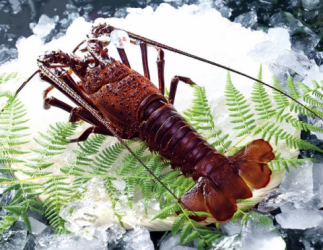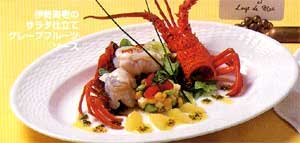Main content starts here.
Foreign Languages > Chiba International Information Square - To foreign residents - > Chiba Nanohana News > Chiba Nanohana News (Past Issues) > Chiba Nanohana News (September 2020)
Update: September 14, 2023
Chiba Nanohana News (September 2020)
Index
I.News
1)Tourism Campaign

Following the efforts to prevent the spread of the novel coronavirus and to promote businesses within the prefecture, Chiba has implemented the “Together with Chiba!” campaign. As part of this campaign, we are conducting various tourism promotions to rediscover the charms and attractions Chiba Prefecture has to offer.
Accommodation facilities participating in the campaign are taking proper measures against the spread of the virus such as complying with certain guidelines established by businesses. We hope that travelers will take this opportunity to enjoy their trip to the prefecture while paying attention to their health and adopting a new travel etiquette.
1. “Discover Chiba” Complimentary Accommodation Campaign
In order to enjoy travel within the prefecture, Chiba’s campaign includes up to 5,000 yen cashback or discount per person (with up to three recipients) towards their accommodation! Winners will be chosen via lottery. Up to 200,000 night stays will be awarded totaling 1 billion yen in cashback prizes! Apply now!
(1)Application and Lottery schedule
1st Round: Already completed
2nd Round:
- Application period: 9/15 (Tues.)-9/29 (Tues.)
- Lottery winner decided: 9/30 (Wed.)
- Winning ticket delivery: 10/5 (Mon.)
3rd Round:
- Application period: 9/30 (Wed.)-10/14 (Wed.)
- Lottery winner decided: 10/15 (Thurs.)
- Winning ticket delivery: 10/19 (Mon.)
4th Round:
- Application period: 10/15 (Thurs.)-10/29 (Thurs.)
- Lottery winner decided: 10/30 (Fri.)
- Winning ticket delivery: 11/4 (Wed.)
(2) Those able to apply:
We are currently only accepting residents of Chiba Prefecture
(3) Valid until:
From one day after receiving the ticket until January 3rd, 2021 (Sun.)
(4) How to apply:
You can apply online on the Discover Chiba website ( External link )
(5) Conditions of Use:
- The winning participant must be present at the accommodation (plus up to three more guests. All guests must be residents of Chiba).
- The ticket can be used with other special offers such as the Go-To Travel campaign.
- Limited to one time use if used at the same trip and facility
(6) Check the list of participating accommodation facilities on the “Discover Chiba Website”( External link )
(7) Inquiries:
Discover Chiba General Call Center: TEL:0570-054-389
Hours of operation: Everyday 8:30am-5:30pm (Excluding the New Year holidays (12/29-1/3))
Discover Chiba Management Office: E-mail:discoverchiba@jtb.com
2. Cheerful together! Chiba’s “Omotenashi” Service
Local businesses are working together with accommodation facilities throughout Chiba Prefecture to offer unique forms of “omotenashi” (hospitality) for their guests.
Examples of “omotenashi” services:
- One free item of local seafood ("Ise-ebi" [Japanese spiny lobster], abalone, etc.)
- Outdoor experiences unique to the area (horseback riding, etc.)
- Free gifts of delicious agricultural products (rice, vegetables, etc.)
There are 478 participating accommodation facilities as of August 27th.
Check the list of accommodations participating in this campaign on the“Discover Chiba” website( External link )
Inquiries: Chiba Prefecture Tourism planning Division Tel:043-223-3492
3. “Thank You Chiba” Rail Pass Sales
Chiba Prefecture and the East Japan Railway Company (JR East) are offering a rail pass which allows unlimited rides within JR lines, some other railroads, buses, and ferries within the prefecture.
(1) Ticket prices: Adult 3,970yen Child 1,980yen
(2) Where to purchase: Main JR East stations in Chiba (reserved seat ticket vending machines only)
(3) Sales period: 9/1 (Tues.) – 11/29 (Sun.)
*You can purchase a rail pass from up to one month before the pass’s effective date of use until the actual start date of the pass.
(4) Usage period: 9/1 (Tues.) – 11/30 (Mon.) 2020
*Valid for two consecutive days.
(5) Available Routes for Rail Pass Holders
- Railway: JR East lines in Chiba Prefecture, Kominato Railway Co., Ltd., Isumi Railroad Co., Ltd., Choshi Electric Railway Co., Ltd., Ryutetsu Co., Ltd.
- Bus: Kominato Railway Co., Ltd., Kujukuri Railway Co., Ltd., JR Bus East Co., Ltd., Tateyama Nitto Bus Co., Ltd., Kamogawa Nitto Bus Co., Ltd., Chiba Kotsu Co., Ltd., and Keisei Taxi Narita Co., Ltd. Buses will follow a designated route. "Boso Satoyama GO" (a special tour bus with a limited time schedule) is also included.
- Boat: Tokyo-Wan Ferry Co., Ltd. (Kurihama Port-Kanaya Port)
*Due to COVID-19, routes are subject to change.
Inquiries: Chiba Prefecture Tourism Promotion Division, Phone:043-223-2412
2) Census 2020
The Japanese government will be conducting a census on October 1, 2020. This census is the most important statistical survey and is held once every five years. The results of the census will be used for measures such as city planning to make life easier for foreign residents.
The census covers everyone that has lived or plans to live in Japan for more than three months, regardless of nationality. Everyone that is covered is legally obliged to respond, so please be sure to do so.
Your responses will only be used to create statistics and will not be used in any way for immigration control, police investigations, or other such purposes.
1. Distribution of Census Survey Documents (from Monday, Sept 14)
A census taker will visit your household and will distribute the census survey documents by putting them into your mailbox.
2. Online Response Period (Monday, Sept 14 to Wednesday, Oct 7)
You can respond to the census online in English, Chinese, Korean, Vietnamese, Spanish, or Portuguese. When the census survey documents arrive at your home, access the Response Site, and follow the instructions on the screen to respond to the census.
To respond, you need the “Login ID” and “Access Key” noted in the “Online Response Guide” which you will find in the “Census Survey Document Envelope” that is distributed to you.
*If, after responding, there is a change to your household conditions such as a birth or relocation etc. before Thursday, October 1, please login again and make the correction.
*Households that have responded online do not need to submit a paper survey. Do not fill out the paper survey and discard it so that it is not used.
3. Paper Response Period (Thursday, Oct 1 to Wednesday, Oct 7)
If you are not able to respond online, you can do so with a paper survey.
*Submission by mail may not be available in certain areas.
*If postal submission is difficult, please contact the Census Call Center below and ask for a Census Taker to come and collect your Census Survey Document.
Census Call Center: 0570-07-2020
Monday, September 7 to Saturday, October 31 8:00am to 9:00pm
Foreign language support is available.
The Census 2020 Website( External link )
3)Disaster Preparedness
As Japan observes Disaster Prevention Day on September 1st, the week of August 30th-September 5th will also dedicated to disaster prevention and preparedness. Disaster Prevention Day (9/1) was established after the strike of the Great Kanto Earthquake on September 1st, 1923.
Last year, Chiba Prefecture was hit by Typhoon Faxai on September 9th, and Typhoon Hagibis on October 12th. These two typhoons along with heavy rain on October 25th caused immense damage throughout the prefecture. Let’s use these events as an opportunity to check our daily preparedness against typhoons, earthquakes, and other natural disasters.
■ Disaster Prevention Information
Chiba Prefecture disaster prevention portal( External link )
This website provides disaster related information in Chiba Prefecture. Some pages are available in Japanese, English, Korean, Chinese, Spanish, and Portuguese.
“Safety Tips,” a tap-enabled information alert app for foreigners
This application provides alerts about Earthquake Early Warning and Tsunami Warning as well as useful functions at the time of disaster in Multiple Languages.
Download links
Japan Meteorological Agency( External link )
■ Daily Preparations
Preparing Stockpiled Goods
Buy more food than usual and eat them from oldest --> newest. Replenish used items. You can heat food with a cassette stove.
(Example of stockpiled goods)
- Water (3L per person a day for a week), cassette stove, cassette cylinder, food (rice, cup noodles, retorts, snacks, etc.)
- Handheld radio, portable toilet, cellphone battery, flashlight, trash bags
- Essential medication, sanitary items, powdered milk, diapers, etc.
Confirming Dangerous Locations and Evacuation Centers
Make sure to know locations susceptible to flooding or mudslides in the event of a typhoon or heavy rains by checking your municipality's hazard map.
Find safe roads and evacuation shelters to ensure you can evacuate safely. The location of the evacuation shelter may change in the event of heavy rain or a tsunami
■ If an earthquake strikes
- Earthquake Early Warning
An early earthquake warning occasionally sends out a notification that an earthquake is about to strike.
In the short amount of time until the earthquake strikes, make sure to ensure your safety. - Earthquake
Crouch under a table or desk and wait until the shaking stops. - When the shaking stops
Evacuate immediately if you are in an area susceptible to tsunamis or mudslides.
Put out any fires and open your doors and windows to ensure a route of escape. - Tsunami
There is also the risk of a tsunami in the event of an earthquake. If you feel an earthquake while you are at the beach, get as far away from the beach as you can and evacuate to a high place. - Evacuation, Checking on the Safety of your Family
Check accurate information on the radio or other form of communication, and if your house is in danger of collapsing, evacuate immediately.
Confirm your family's safety. If possible, avoid using your phone, and use a disaster messaging service instead.
Disaster Emergency Message Dial (171)( External link )
Mobile phone version of Disaster Emergency Message Dial
- <NTT DoCoMo>(English)( External link )
- 〈au〉(English)( External link )
- <Softbank>(Japanese)( External link )
- <Y!mobile>(Japanese)( External link )
■ Preparations for Typhoons/Heavy Rains
- Check around your house and bring any objects inside or secure items that are in danger of being blown away. If you live in an area susceptible to flooding, make sure you place your household goods, food, and other lifestyles goods in a high place.
- Pay attention to weather information.
- Do not go outside unless absolutely necessary. Public transport may be stopped, so make sure you are up to date on the latest operation information.
- Move any sick people, infants, or disabled persons to a safe location.
- Pay attention to evacuation information published by your municipality and try to evacuate as soon as you can.
If it seems like your family will take a long time to evacuate, make sure to start early.
Evacuation
Evacuation timing will be announced based on the warning level. Evacuate immediately in the event of a warning level 3 or 4.
- 〔Warning Level 1〕 Confirm your disaster preparations.
- 〔Warning Level 2〕 Confirm the location of your nearest evacuation center and roads.
- 〔Warning Level 3〕 Evacuate elderly persons, disabled persons, infants, or others whom need extra time to evacuate. Your municipality will publish evacuation preparation information.
People other than those listed above prepare to evacuate. - 〔Warning Level 4〕 Everyone evacuates. Your municipality will publish an evacuation advisory and evacuation orders.
- 〔Warning Level 5〕 A disaster has struck. Make sure to ensure your safety.
II. Charm of Chiba
1)Chiba Brand Marine Products: “Sotobo Ise-ebi”


Surrounded by the ocean on three sides, Chiba Prefecture’s Boso Peninsula is a breeding ground for abundant marine life throughout all four seasons and is the leading producer of "Ise-ebi" (Japanese spiny lobster). The catch of 2018 was ranked the second largest in the country.
Even from long ago, lobster has always been a must in times of celebration because of its vibrant color and magnificent appearance. The main areas of production are Isumi, Katsuura, Onjuku, Kamogawa, and Minamiboso City. The lobster is caught by a fishing method called “gillnetting.” Because the coastline that stretches along the Sotobo area produces such abundant marine life, the lobster that comes from here is designated as Chiba’s own brand of “Sotobo Ise-ebi.”
<Chiba Brand Marine Products Certification System>
Founded in 2006, the Chiba Brand Marine Products Certification System aims to improve the overall image of "Chiba's fish,” increase consumption, and contribute to the promotion of the fishing industry in Chiba Prefecture.
<Features of Chiba Brand Marine Product “Sotobo Ise-ebi”>
- Season: April-May, August-December
- Size: Over 13cm in length
- Lobster is caught using a traditional gillnet method. After the gillnet is brought in, each lobster is carefully pulled out one by one and then kept in a fishing tank to preserve its high quality and freshness.
- In order to boost the Sotobo area, sales promotion and PR is implemented in places such as the Morning Market in Ohara Fishing Port, the Onjuku Lobster Festival, and the Isumi Lobster Festival.
- Chiba strives for resource management by prefectural rules and each fishery’s own unique efforts.
Certified businesses: Isumi Eastern Fisheries Cooperative, Shinkatsuura Fisheries Cooperative、Onjuku Iwawada Fisheries Cooperative
<How to Purchase>
- Isumi Eastern Fisheries Cooperative Store (Isabaya)( External link )
Delivery available ・ Shipping fee not included - Shinkatsuura Fisheries Cooperative Association (Head Office)( External link )
- Onjuku Iwawada Fisheries Cooperative( External link )
- More information on where to buy and eat Sotobo Ise-ebi
<Recipe for Lobster Salad>

Ingredients (makes 4 servings)
•4 spiny lobsters (180g) •2 pieces of red leaf lettuce •2 pieces of lettuce
•1 salad spinach leaf •4 leaves of Mache •20-30 green soybeans
•1/5 of an ear of corn •20g of Japanese yam •4 cherry tomatoes
•2 sprigs of chervil •8 chive stalks •3 small tomatoes
<Grapefruit Sauce>
•1tbsp of mayonnaise •50cc of fresh cream •5-7g of ketchup
•1 grapefruit •1tsp of tabasco •1tsp of cooking brandy •pinch of salt •pinch of pepper
<Dressing>
•50cc olive oil •juice from 1/4 of a lemon •1tsp of chopped chives
•1sp of ground sesame •splash of balsamic vinegar
<Directions>
- Peel the shell from the lobster and remove the spine. Cut it in half and boil. Then, soak it in cold water. Drain the water and add salt and pepper.
- The head of the lobster will be used for decoration so leave it boiling
- Peel the grapefruit and remove 8 slices. Squeeze the juice out the remainder of the grapefruit.
- To make the grapefruit sauce, combine the mayonnaise and ketchup. Slowly add the fresh cream and whip together. Season it with the grapefruit juice (step 3), tabasco, brandy, salt, and pepper.
- For the dressing, mix the olive oil, lemon juice, chopped chives and sesame together.
- Chop and toss the red leaf lettuce, lettuce, Mache, and spinach together.
- After boiling the green soybeans and corn, mix together with the grapefruit slices, Japanese yam and lightly add the dressing from step 5.
- Scoop the soybean and corn mix (step 7) on the bottom left side of a plate and garnish with the tomatoes and chervil. Sprinkle the lettuce mix (step 6) on the right side of the plate and place the lobster (step 1) on top of it. Drizzle the grapefruit sauce (step 4) over it. Decorate the rest of the plate with the dressing, chives, chervil and grapefruit slices.
